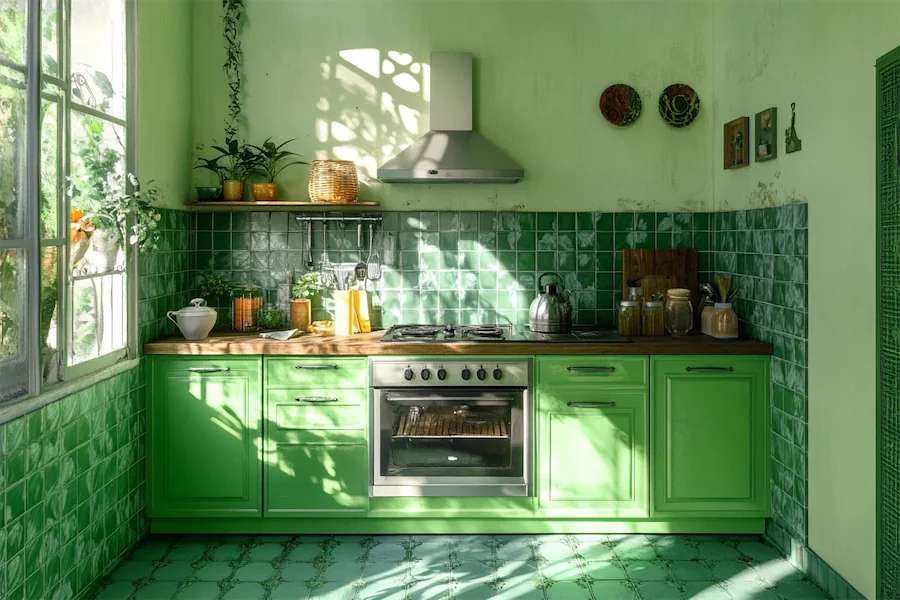A green kitchen introduces a refreshing and vibrant atmosphere, seamlessly connecting the heart of your home to nature. The versatility of green allows it to complement various design styles, from traditional to modern, making it a popular choice for kitchen interiors.
Key Features of Green Kitchens
- Versatility: Green pairs well with numerous colors and materials, allowing for diverse design combinations. For instance, combining green cabinetry with brass hardware and marble countertops creates a warm, modern farmhouse look.
- Connection to Nature: Incorporating green hues can bring a sense of the outdoors inside, enhancing the kitchen’s ambiance. A monochromatic green kitchen can evoke a calming effect, reminiscent of natural landscapes.
- Timeless Appeal: Shades like sage and forest green offer a classic look that remains stylish over time. These hues can adapt to both traditional and contemporary kitchen designs.
Applications of Green Kitchens
- Cabinetry: Painting cabinets in shades of green can serve as a focal point, adding depth and character to the kitchen. For example, deep fern green cabinets can make the room come alive, as seen in certain design makeovers.
- Backsplashes: Green tiles or glass backsplashes introduce color and can complement neutral countertops and appliances. A vivid green backsplash can transform a white kitchen into a more dynamic space.
- Accent Walls: A green-painted wall or patterned wallpaper can add visual interest without overwhelming the space. This approach allows for easy updates and personalization.
Considerations When Designing a Green Kitchen
- Shade Selection: Choosing the right shade of green is crucial; lighter tones like mint or sage can make a space feel larger, while darker hues like emerald or forest green add coziness and sophistication. The choice of shade should align with the desired mood and existing decor.
- Lighting: Natural and artificial lighting can significantly affect how green hues appear; it’s essential to test paint samples under different lighting conditions. Proper lighting enhances the chosen shade and overall ambiance.
- Complementary Colors: Green works well with neutrals like white, gray, and wood tones, as well as contrasting colors like brass or gold accents. Pairing green with these colors can create a harmonious and balanced design.
Conclusion
Incorporating green into your kitchen design can create a lively and inviting space that reflects both personality and a connection to nature. By carefully selecting shades, considering lighting, and pairing with complementary colors, a green kitchen can become a timeless centerpiece in your home.
